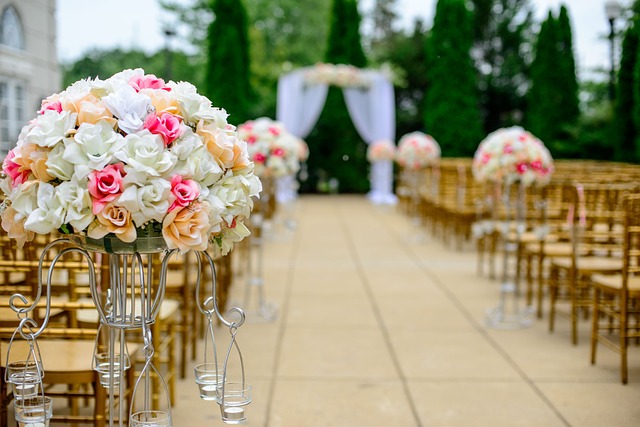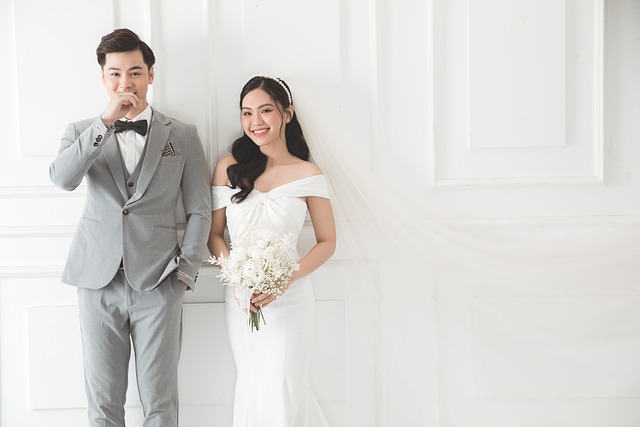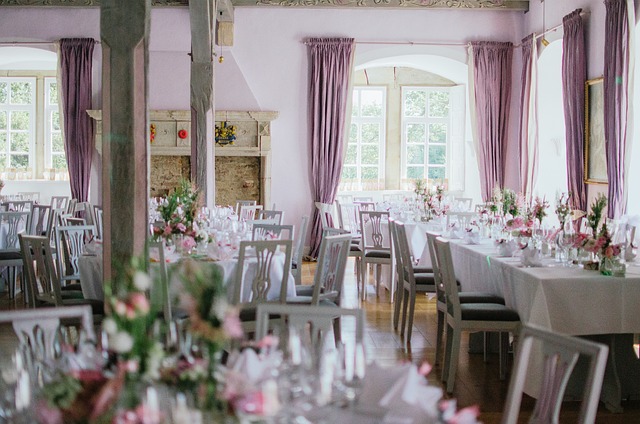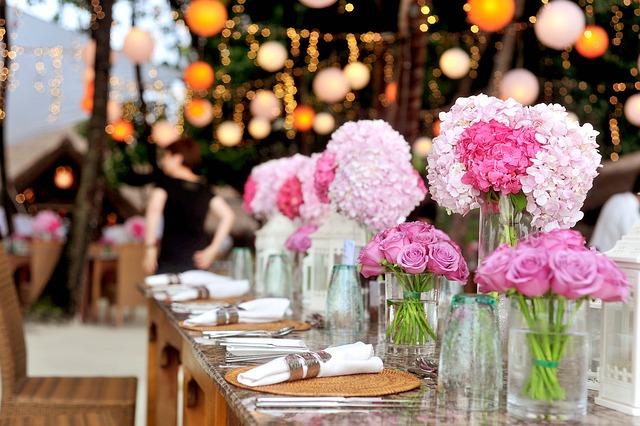The Ultimate Wedding Reception program

No wedding reception is the same. Some couples like a traditional big dinner and then a kicking dance party, while others plan a comparatively long cocktail hour that segues into a series of theme-based activities. Whether you want your special day to look a certain way or not, all post-ceremony celebrations share at least one thing in common: a good timeline. It may not sound romantic, but you need a detailed schedule to make sure everything runs smoothly.
A standard wedding reception includes one hour of cocktails and four hours of dinner service during the reception. But, there’s a lot of wiggle room to customize the event to fit your own vibe. Everything from your personality as a couple to cultural traditions — to the venue and guest count — dictates how the evening goes. The trick is to create the timeline that fits your vision. There isn’t a one-size-fits-all timeline, but industry insiders break down a general framework that works for many couples.
Here, experts walk us through an hour-by-hour guide to the perfect wedding reception timeline.
Cocktail Hour
The Official Welcome
If you’d like to enjoy your entire cocktail hour, take all of your formal photos prior to the ceremony, says Madison Clarke, an event planner from Clarke & Co. Weddings. In this way you can greet your guests, dine on the refreshments and remain a part of the first phase of the celebration.
Candid Moments
Cocktail hour is a nice time to snap some casual and candid photos with your guests. These candid images, in addition to traditional portraits, are typically captured much earlier in the day and show a more personal side of your wedding experience.
First hour of the reception
The first hour of your reception is usually rated with some of the most important formalities, such as your grand entrance, first dance, etc. If you have a limited-availability photographer or videographer, make certain the critical moments are captured early in the celebration.
Grand Entrance
During the beginning of the reception, the newlyweds, their wedding party and immediate family are introduced. In American weddings traditional, this takes five to 10 minutes depending on the size of the party. Though cultural practices can have this timeline stretched. At a Nigerian wedding, for example, entrances can run between 15 and 30 minutes, complete with celebratory dancing and money-spraying traditions, says the event designer Daniel Okafor.
First Dance
Following this grand entrance, the couple will usually segue into their first dance. “This gives the newlyweds something to do right after introducing themselves,” says Camille Morgan, planner of Morgan Events. But it’s wise to reserve parent-child or family dances until later in the night to help recharge the dance floor organically after dinner has been served.
Kicks Off Welcome Toasts and Blessings
After the first dance, one or both sets of parents might give a short welcome speech or blessing, and then dinner service resumes. “If there’s an officiant prayer, it’s a cue for guests to find their seat so that the catering team can go into service efficiently,” Morgan says. Many families who are religious factor this tradition into the celebration.
Dinner Service Begins
While cocktail hour should offer enough bites to tide guests over, bringing dinner in at a timely hour is very important. Feeding guests well before the dance floor opens keeps the event moving forward.
2nd Hour of Reception
More elements come into play in the reception, such as outfit changes, toasts and family dances.
Wardrobe Change
Many contemporary couples plan a wardrobe switch between dinner and dancing. This is your chance to change into something more suitable for the rest of the evening. Others may transition in or out of traditional draping clothing. “Depending on the intricacy of the attire, couples may require additional time,” says the planner Sophie Lin. “Some even have their glam squad on-site for last-minute hair and makeup tweaks.”
Closing of the Dinner Service
When the final plates have been cleared away, move seamlessly into speeches or honorary dances. By this time, most guests are ready to finish eating and move on to the next part of the evening.
Toasts
Even with designated toasts time slots, it’s good to add in a buffer of 10-15 minutes in case speakers go over their speaking times. To help things move along during the evening, tell toast-givers what your time guidelines are in advance.
Family Dances
Before opening the dance floor to all guests, sentimental parent-child dances, like the father-daughter or mother-son dance, are a fun experience. “The couple goes where the guests go,” Lin says. “If you want people to dance all night, then be an example and stay on the dance floor.”
Traditional Dances
Cultural weddings might involve traditional dances or music. “Schedule these performances early enough so that photographers can get these shots,” suggests event coordinator Rachel Patel. “They usually happen before the cutting of the cake, but the timing really depends on the couple and their traditions.”
Cake Cutting
A short interruption to bust a cake is therefore a natural transition between events. Ordinarily, guests may depart after this moment, so it’s best scheduled after key celebrations are done.
Reception’s Third Hour
At this point in the event, it is all about the party on the dance floor.
Games and Interactive Fun
This is also where you’ll want to include any wedding games — for example, the bouquet toss or trivia. However, there are interactive elements like a photo booth or crossword stations to engage with throughout the evening.
Dance Floor Opens
Whether you’re having a live band or a DJ, the third hour is the peak of your dance party. This is when guests dive deep into the music and revelry.
The Reception’s Fourth Hour
There are a few last elements to keep the reception running close to the end.
Late-Night Snacks
To ensure guests have enough energy, consider serving some small bites late into the night. Things like sliders, tacos, even a food truck showing can keep guests fueled up before the night ends.
Last Call
Last call, if your venue has a strict closing time, lets guests know the night is coming to a close. This need not be an official announcement, but subtle clues, like slowly dimming the lights or music, can help switch guests out of party mode and toward the exit.
Last Dance and Departure
So it would be a good time to plan a dramatic send-off if you’re going to be out during the last ten minutes of the night. Whether it’s a sparkler send-off, fireworks, or a more low-key private dance, this finishing touch cements the memory.
Bonus Hour: The After Party
For those guests with leftover energy to spare, the celebration can continue at an after-party. The easiest way is to book a local venue and alert the interested parties beforehand. Whether it’s a leisurely get-together at a bar or a full-fledged after-party, this time gives close friends and family the opportunity for a low-key celebratory extension.
A timeline takes a lot of stress away from your reception and makes for great transition moments. While structure is key, flexibility makes certain that the celebration is organic and enjoyable for you and your guests. The best receptions, ultimately, balance tradition with personal touches, making for an unforgettable evening for all involved.







